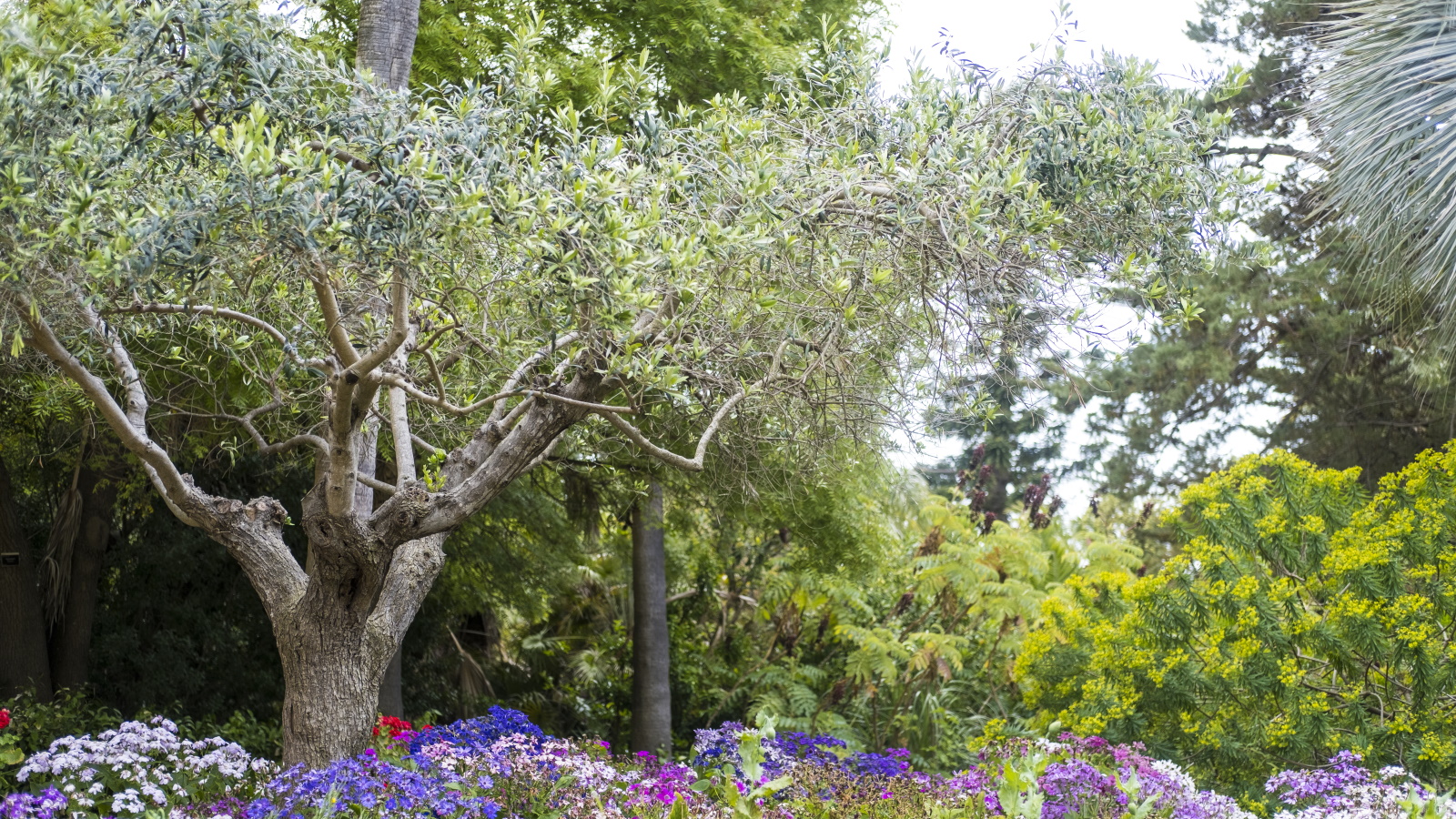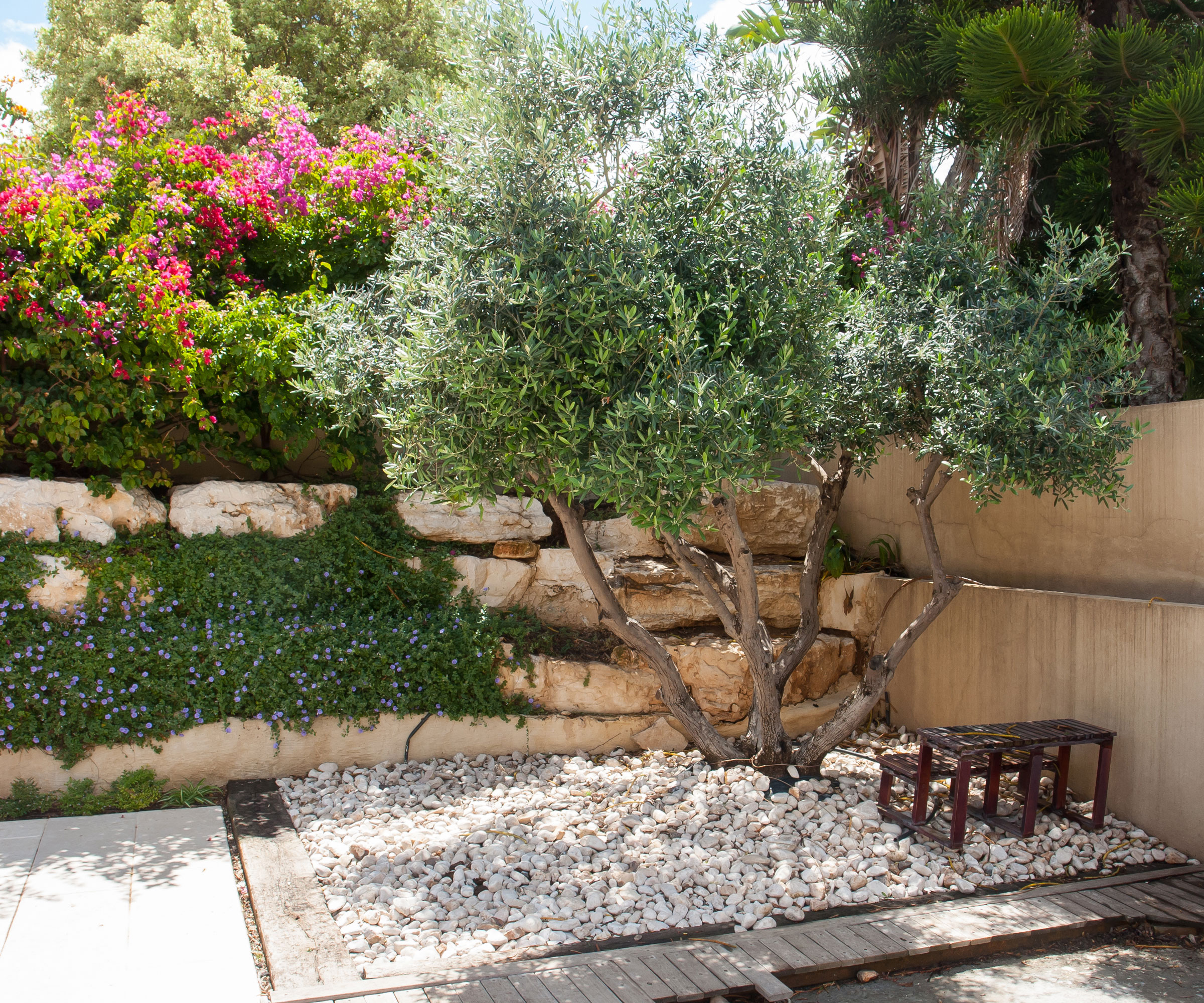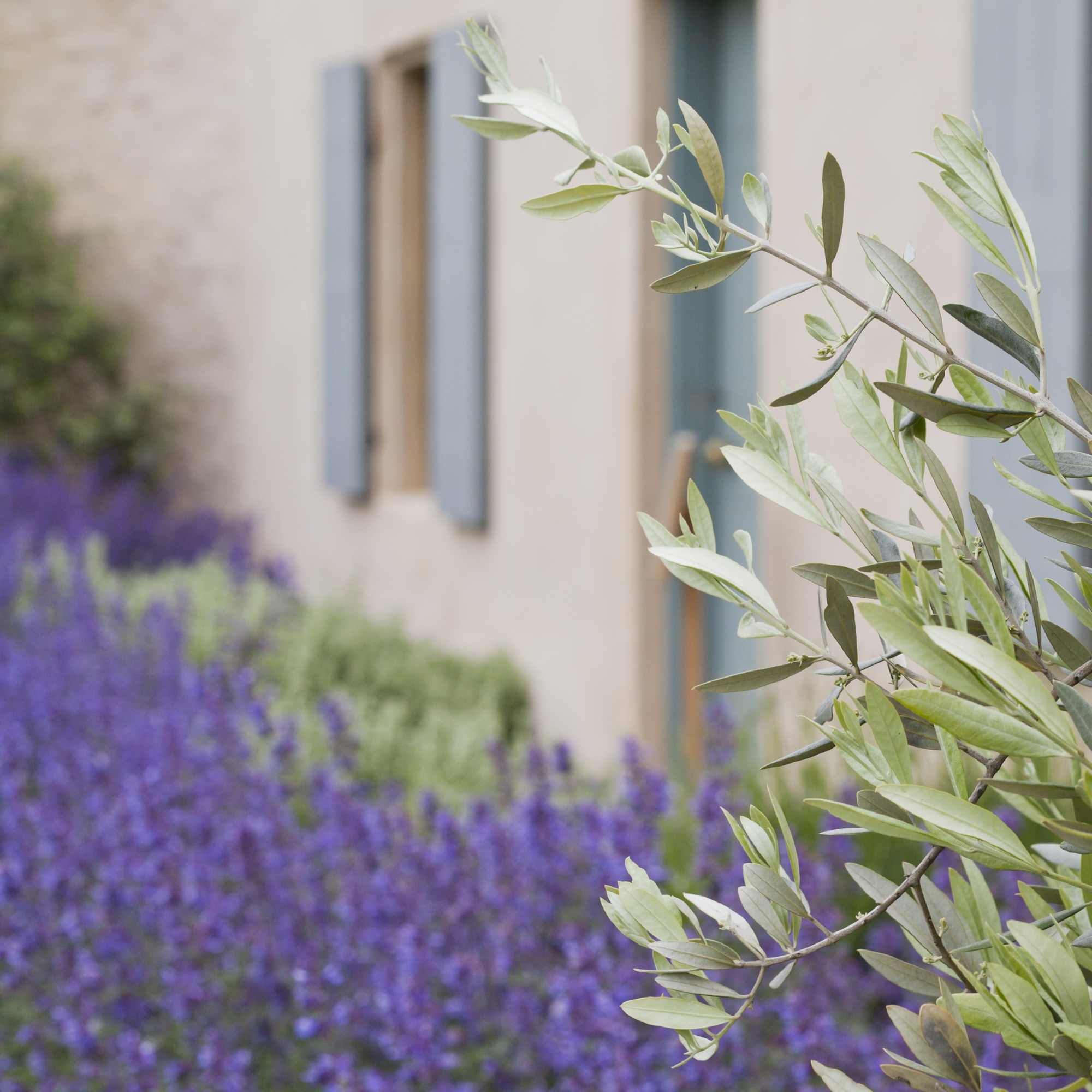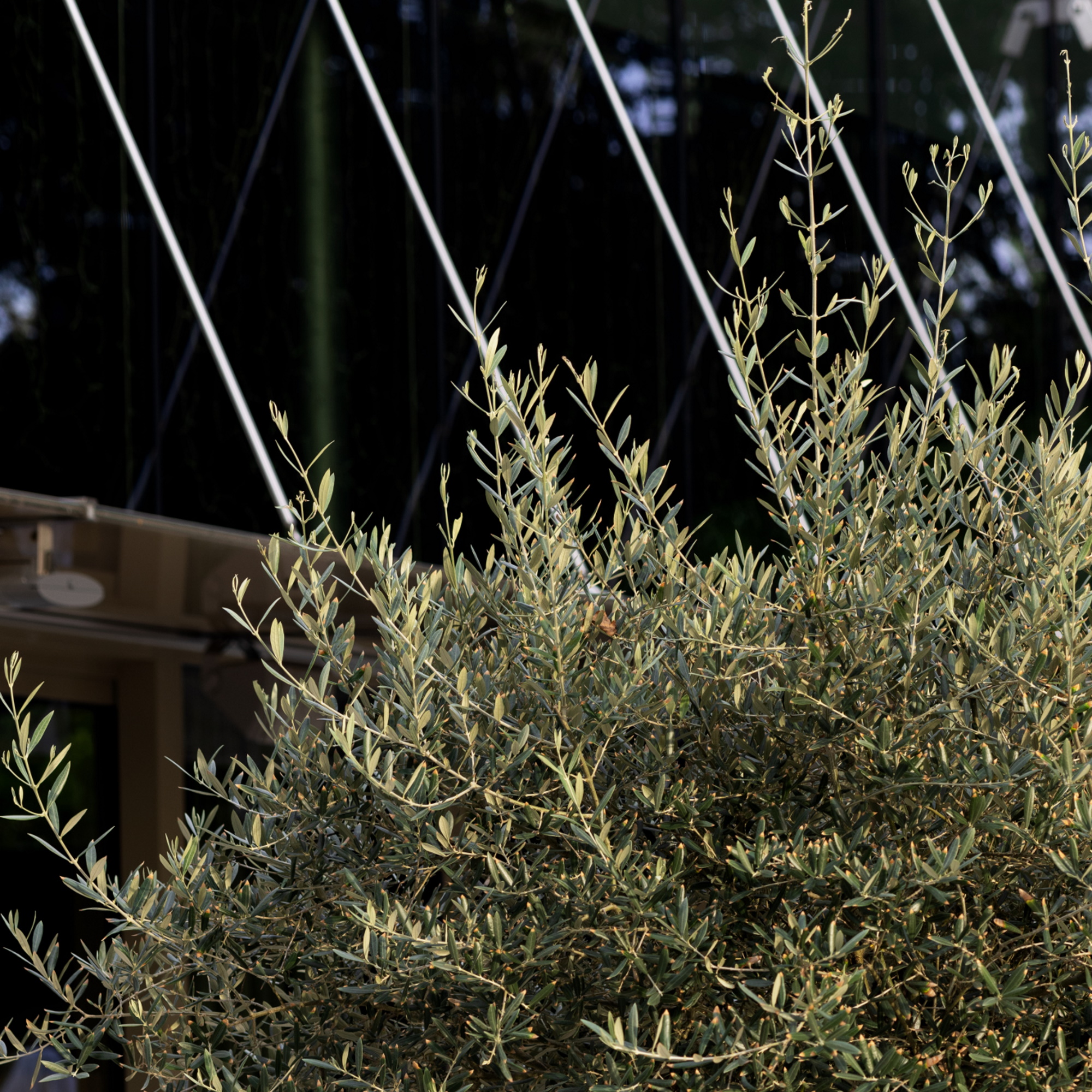
The olive tree, Olea europaea, is an evergreen with a rich history. It is native to the Mediterranean region, specifically Greece, Italy, the Iberian Peninsula and Middle Eastern regions. It remains an intrinsic part of the Mediterranean landscape, with olive groves a familiar sight across much of Southern Europe. The small black edible fruits can be made into an oil to be used in cooking, cosmetics, and in medicine.
Compact in size, well maintained olive trees can create unique and unusual feature trees in any suitable outdoor area. If you are restricted by space or climate, consider planting in a large container, allowing you to protect and move the tree, if needed.
The silver-green foliage of the olive tree is evergreen, providing year-long interest, as well as the trunk of older specimens appearing knotted and twisted. Whilst it is a drought tolerant tree, ideally suited to hot and dry climates, some varieties can be more tolerant of a cooler climate.
By following these simple care and growing tips, you can ensure your olive tree thrives.

Olive tree key facts
- Plant type: Evergreen tree
- Mature size: 13-26ft after 20-50 years
- Soil type: Well-drained
- Soil PH: Neutral
- Time of year to plant: Spring or fall
- Flowering time of year: Summer
- Hardiness zones: USDA 6 - 11 (dependent on variety)
- Scientific name: Olea europaea
When, where and how to plant an olive tree

When deciding on an olive tree it is important to consider which variety is most suitable for your location. There are many varieties of olive trees and most will grow well in US hardiness zones 6 to 11.
If temperatures in your area drop below 15 degrees Fahrenheit this is a risk, as the tree may not survive the winter. Some of the best varieties to consider include Arbequina, Frantoio and Leccino, which can all be planted in spring or fall.
'Most olive trees prefer to be in full sun to partial shade,' says Alex Kantor, owner of Perfect Plants Nursery. 'It will be best to plant them somewhere where the trees can receive 6-8 hours of sunlight, and they prefer well-draining soil.'
Alex recommends digging a hole about two inches larger than the olive tree container and then preparing your soil before planting, which can 'greatly improve growth habits', he says. 'Organic materials like coco coir can provide your soil with nutrients and help the soil have better drainage.'
Aftercare for olive trees

After planting, 'regular monitoring of your olive tree is crucial to check on watering, especially during hot and dry spells,' says Drew Swainston, gardening expert and content editor at Homes and Gardens.
'While we may assume that olive trees are drought tolerant, they still require water to survive, especially when newly planted.' If trees do not get enough moisture during spring, 'this can have a negative impact on the flowering and fruiting of the tree,' say Drew, 'so be sure to keep an eye on the thermostat at this time of year.'
Once the tree has matured you will not need to monitor your olive tree quite so much, but if your area is prone to periods of drought, do remember to check on your tree.
Alex Kantor suggests feeding your olive tree one to two times a year: 'once in the spring and once in the mid to late summer'. You can also stake the trunk of the tree to ensure growth is straight and upright on younger trees.
'The main pest to look for regarding your olive tree is the olive fruit fly,' Alex says. 'The larvae feed on the olives grown from a tree and can ruin your crop.'
This can be managed by collecting and disposing of fallen fruits and leaves underneath your tree, and consulting your local garden store on pest management products available.
Like all fruit trees, you will need to prune olive trees. Regular inspection will help to identify any dead, damaged or diseased wood to remove. Suckers shooting from the base can be cut back, and an annual prune of branches growing inwards towards the middle of the crown will help to keep an attractive shape that works for your space.
Miracle-Gro Fruit and Citrus Plant Food Spikes, to promote more fruit and lush foliage
FAQs
When is the best time to plant an olive tree?
It is generally advised to plant olive trees in spring or fall, when the temperature is mild and before the warmth of summer, with risk of drought, and before the cold of winter, with the risk of frost.
Can you plant an olive tree in a container?
Olive trees are a great option to plant in a container. The size of specimen will determine the container size you use. Be sure to include a layer of drainage at the base of the container, and to plant using a free draining mix. Note that containers will require more frequent watering during the warmer months.
Can you grow an olive tree indoors?
Yes, you can grow olive trees indoors. Yet growing conditions indoors are not as suitable. It is advised, if possible, to move the container outside during the spring and summer months, to give the tree the best chance of success.
Olive trees are an incredibly versatile evergreen tree, and by following this simple care guide, watch your tree grow. By including an olive tree in your yard, you too can create structure and year-round interest, so why not consider planting an olive this spring?







